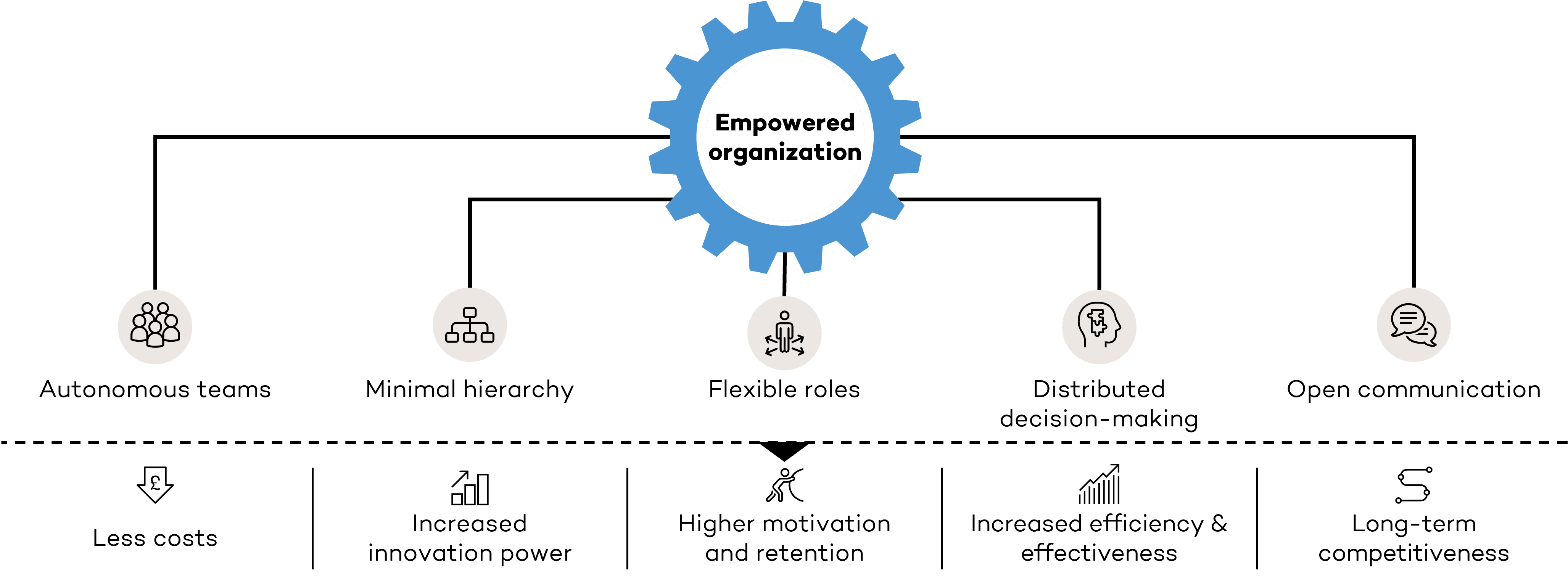Unleashing potential: Empowerment meets cost reduction
In today’s fast-paced and highly competitive business landscape, organizations must constantly adapt and innovate to stay ahead. Traditional hierarchical structures often hinder this agility, resulting in slow decision-making processes and stifled creativity. Empowered organizations, with their decentralized and flexible designs, offer a transformative solution. By shifting towards empowerment, companies can unleash speed and creativity, driving significant business growth and innovation.
The need for empowered organizations
Large institutions, particularly those burdened by bureaucratic structures, face significant challenges. Despite being composed of creative, daring, and passionate individuals, the bureaucratic framework often stifles these qualities, leading to untapped potential. Key issues include:
- Volatile markets and supply chains: Rapid market changes require swift decision-making, which traditional hierarchies struggle to provide.
- Increased wage levels: Rising wages necessitate more efficient and effective organizational structures to maintain profitability.
- Staff tied up in indirect functions: Excessive focus on indirect functions rather than core activities dilutes organizational effectiveness.
- Excessive middle management: Too many layers of management slow down decision-making and increase costs.
- Skilled staff shortage: A lack of skilled workers demands a more efficient use of available talent, which empowered structures can better facilitate.

The solution: empowered organizational design
Empowered organizations address these issues through a decentralized structure that fosters autonomy, collaboration, and continuous innovation. This approach includes:
- Autonomous teams: Small, self-governing teams are at the heart of empowered organizations. These teams have the authority to make decisions about their work, resource allocation, and methods, enabling them to respond swiftly to customer needs and market changes.
- Minimal hierarchy: Traditional boss-subordinate relationships are replaced with peer-based mutual commitments. Decision-making rights flow to those with the expertise, interest, or willingness to contribute, regardless of their position in the hierarchy.
- Flexible roles: In empowered organizations, job descriptions are fluid. When opportunities arise, employees can step forward to take on new roles, ensuring that the organization can adapt quickly to new challenges and opportunities.
- Distributed decision-making: Decisions are made by those closest to the issue, based on advice from those affected and experts in the matter. This approach reduces bottlenecks and leverages the collective intelligence of the organization.
- Open communication: Transparent communication is vital. By sharing information freely, organizations build trust and ensure that teams have the data they need to make informed decisions swiftly.
By reducing operational costs through streamlined processes and fewer management layers, empowered organizations foster a culture of innovation and continuous improvement. This approach leads to higher employee engagement and retention, enhanced operational efficiency, and long-term competitiveness in a rapidly changing market.
Overall, these organizations represent the future of agile, innovative, and resilient businesses. Decentralizing decision-making, fostering a culture of trust and autonomy, and investing in continuous learning and collaboration enable companies to unlock unprecedented speed and creativity. This organizational design not only enhances business performance but also creates a more engaging and fulfilling work environment for employees. As the business landscape continues to evolve, empowerment will be the key to sustaining competitive advantage and driving long-term success.


